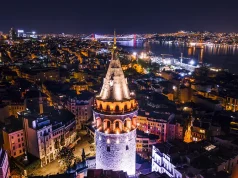
A waterfront that people use all day isn’t a postcard; it’s a system that quietly removes friction. Shade you can rely on beats a pretty rendering. Continuous, even paving invites prams and wheelchairs without fuss. Benches close enough to talk, but far enough to preserve a view, keep couples on the seafront longer. Steps that double as seating make evening crowds feel relaxed rather than packed. Wayfinding that stitches beach, quay, and town together lets you drift from a swim to a café without crossing a maze of barriers. When wind kicks up, low walls and planted pockets temper the breeze, while showers and taps near natural desire lines turn quick dips into all-day use. The best promenades don’t shout; they make every small choice – shade, water, seating, crossings – feel obvious.
If you want a clean way to compare on-the-ground comfort with time on the water, plan your day around the same principles. Start with a calm first leg, build short hops, then return inside headlands as the light softens; on shore, follow the shaded side, aim for frequent rest points, and pick crossings with slow traffic. For a plain-English sense of pricing and route options that mirror this measured pace, consider yacht charter cost French Riviera – scan a sample day, note the short legs and early stops, then bring that clarity back to how you walk and dwell on the seafront. The link between deck layout and promenade layout is real: clear flow, soft edges, and places to pause turn a quick visit into a day you actually live.
Nice: Promenade des Anglais as an Everyday Engine
Nice shows how scale and continuity feed daily life. The promenade’s width welcomes runners at dawn, families by late morning, and flâneurs at sunset without anyone jostling for space. Long bands of shade mean you don’t sprint from tree to tree when the sun bites, and frequent crossings sync with signals so a ten-minute errand on the inland side doesn’t feel like a gamble. Pebble beaches here ask for good ladder points and rinse stations; Nice answers with steps that work as seating and clear lines down to the water. Café clusters arrive where people already slow – near bus stops, gentle curves, and postcard views – so dwell time feels natural. If you map your day around these “soft anchors” (shade, seating, taps, crossings), you’ll notice how rarely you need to compromise. Even on busy days, the space breathes, and that’s the hidden win: you stay longer because nothing nags.
Antibes: Port Vauban and the Old-Town Link
Antibes balances working harbour energy with small-scale pleasures. Port Vauban’s hard edges soften as you move toward the ramparts, where stone, shade, and sea breeze shape a walk you can repeat every evening. The trick is how transitions work: from dock to square, from square to alley, from alley to view. Handrails where slopes steepen, benches just before outlooks, and a rhythm of crossings that never forces a sprint across traffic – all of this keeps the experience calm. On the water, large hulls line the quay; on land, the path still reads human. If your group needs more shade, steadier platforms at anchor, or quieter lunches with plates that don’t slide, think in terms of comfort features you’ve seen nearby – fin stabilizers at rest, deeper biminis, and tidy tender flow – ideas often associated with superyacht charter French Riviera, but perfectly applicable to how you plan time ashore: fewer jolts, more breathers, better talk.
Cannes: Docks, Beaches, and Streets That Join Instead of Compete
Cannes earns its reputation when the city stitches its parts into one day. Port Canto and the Vieux Port work as gateways; Croisette sands and pocket coves offer swim windows; tree lines and awnings give cover for slow walks when heat peaks. The best move is to let water and land share the schedule: a morning swim near the islands, a shaded stroll for lunch, a mid-afternoon pause under plane trees, then a last dip as the light turns soft. Crossings arrive where you actually need them, and kerbs ease rather than jar, so pushing a buggy or rolling a suitcase never feels like a test. If you’re plotting longer French Riviera yacht holidays later in the year, use Cannes to prototype your rhythm: plan two quiet swims around a shaded walk, and you’ll find the city supports that flow without drama. When parts join up like this, you spend less time choosing and more time enjoying.
Lessons You Can Apply Tomorrow – On Foot and Afloat
The Riviera’s most loved waterfronts share the same simple DNA: early shade, honest seating, short gaps between water points, and crossings placed where people actually walk. That logic carries to the sea: board early, make the first swim the longest, cut exposed sprints into two sheltered hops, and save the inside line for your return. Money and energy follow the same rule – clarity reduces stress. If you’re weighing a day on the water, ask for line-item examples so you can see how distance and speed shape costs; once you understand the drivers, you’ll pick routes that fit your pace, not someone else’s agenda. Back on shore, use the same mindset: choose loops with frequent shade and soft places to pause, and you’ll extend your stay without forcing it. When cities and skippers design for humans first, the whole experience settles – you walk farther, swim longer, talk more, and go home feeling like the coast gave you its best.





